F1: USGP at COTA Preview
Formula 1 heads to America for the second time this season to kick off the USA-Mexico doubleheader weekends.
Austin is this year celebrating its 10th anniversary since its inauguration and debut on the
Formula 1 World Championship calendar. Texas’ capital city swiftly established itself as a favorite of the Formula 1 community, owing to its vibrant hub and passionate fan base, while the layout of COTA was a hit among the drivers. It gave Formula 1 the US Grand Prix it had craved for decades,
After more than 400,000 people attended last year’s race across the weekend, that number is likely to be topped this season as demand remains extremely high from fans in the United States. 440,000 are expected.
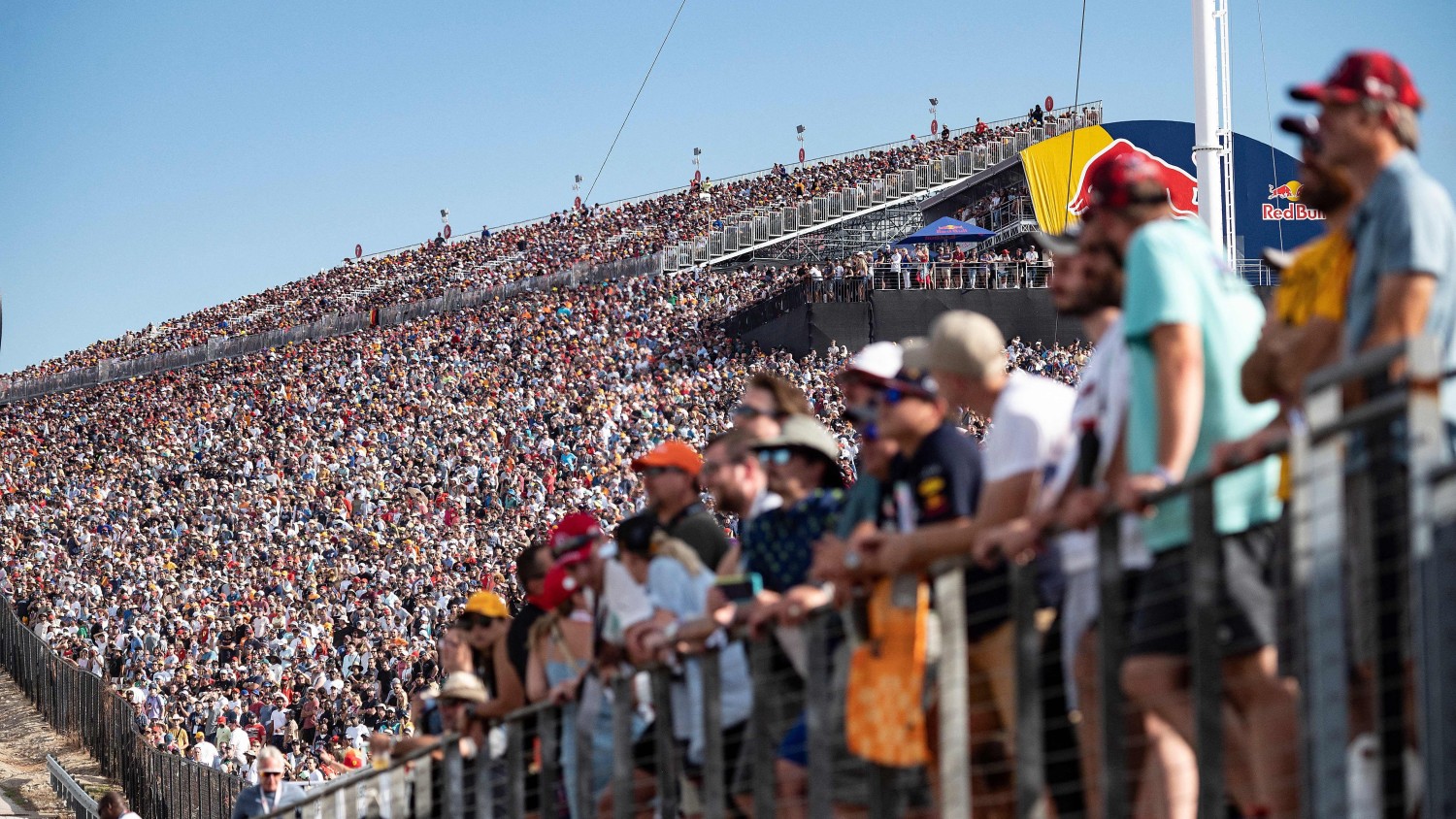
The city of Austin always embraces F1’s arrival and delivers a brilliant atmosphere throughout the race weekend making it one of the favored stops on the season’s calendar for many team members.
The race isn’t just a popular one with spectators, either, as many of the drivers list it as one of the best circuits on the calendar thanks to its undulating first corner, high-speed changes of direction and challenging finish to the lap. On top of that, there are a number of overtaking spots that make it a good all-round test that often provides exciting racing.
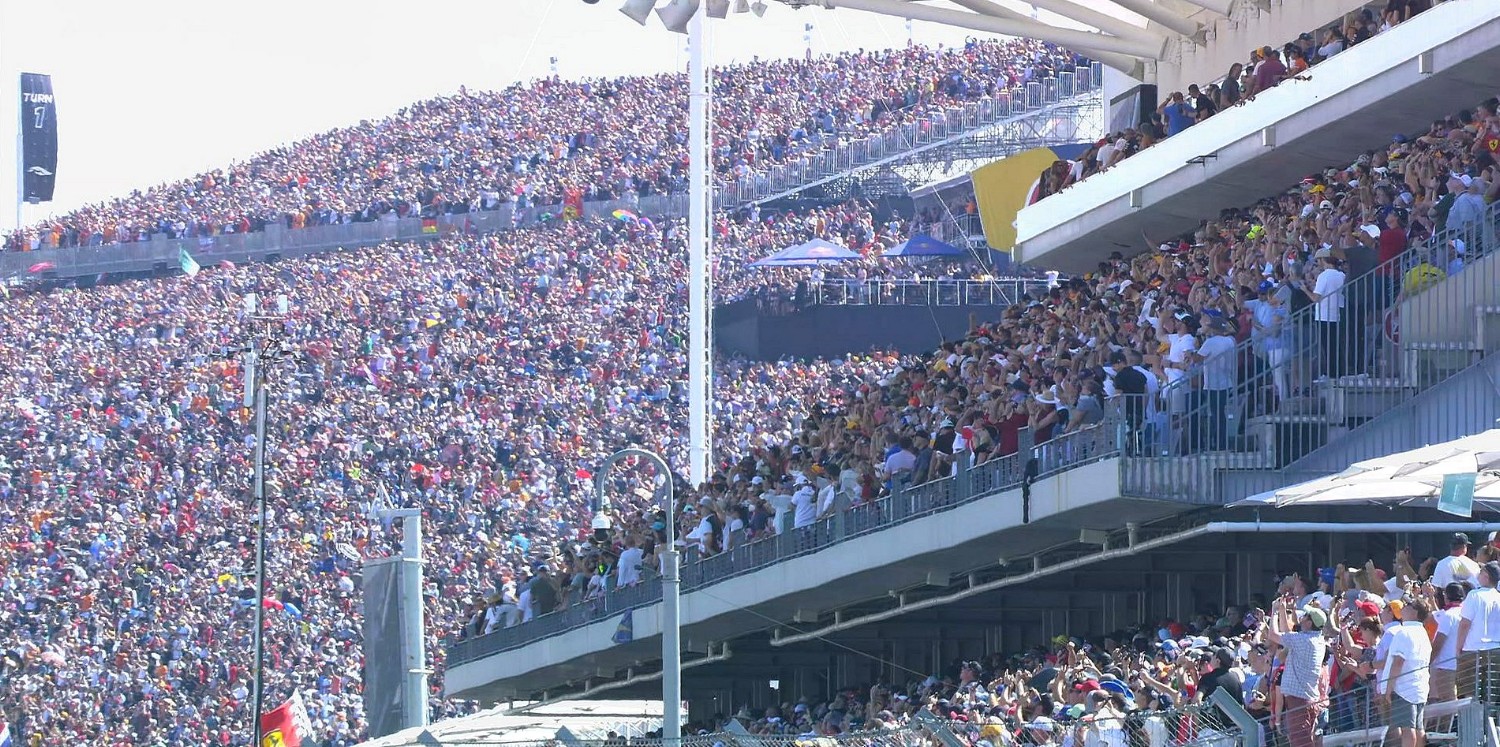
Perfect Weather Forecast
A zero percent chance of rain is forecast at the Circuit of the Americas Thursday through Sunday.
Temperatures will be a high of 84F on Thursday rising to 88F on Saturday and Sunday with winds 10 to 15 mph.
Fact File: United States Grand Prix
- The Circuit of the Americas is one of F1’s bumpiest tracks because of subsidence. The bumps also move and change year on year. Parts of the track were either ground down or resurfaced over the winter to help with this, but bumps will still continue to be an issue.
- Several corners at COTA were inspired by iconic turns from tracks in Europe, including Turns 3 to 6 (Silverstone’s Maggotts and Becketts), Turns 12 to 15 (Hockenheim’s stadium section) and Turns 16-18 (Turn 8 at Istanbul Park).
- The track requires quite high downforce and also has a big DRS effect, which allows you to run reasonably large wings at COTA as a result.
- The first sector is incredibly challenging and technical, similar to the Esses section at the last venue we were at: Suzuka. You need a strong front end to place the car through the series of interconnected corners and a good rear end to have faith it will remain planted. A lot of time can be gained and lost through this series of corners.
- In particular, the sequence from Turns 2 and 7 are taken at an average speed of over 250kph, with continuous cornering for over 800 meters – one of the longest stretches of cornering on the calendar, with g-forces building through each corner.
- COTA is one of eight tracks on the 2022 F1 calendar that is fully anti-clockwise, alongside Jeddah, Miami, Imola, Baku, Singapore, Interlagos and Yas Marina.
- It is tied with Baku for the third-most corners on any F1 2022 track, with 20, behind Singapore (23) and Jeddah (27).
- With so many corners and several long straights, it’s also one of the busiest laps for gear changes, with 72 taking place during each lap of COTA.
- Drivers generate over 5G under braking for Turn 12, one of the biggest of the season – a driver weighing 70kg will experience around 350kg of centrifugal force when they brake.
- With Miami joining the F1 calendar in 2022, COTA is now one of 11 different venues to have hosted a race in the United States. That’s the most of any country.
- The entry to Turn 1 features the single biggest corner elevation change of the season, with a steep, man-made 30m climb upwards in just over 200m of track. For comparison, COTA’s Observation Tower measures in at 77m tall.
- Several corners at COTA feature wide entries to encourage different lines to be taken and promote overtaking, including Turns 1, 11 and 15. The latter corner is also interesting for its ‘combined’ braking, where the car is turning and braking at the same time. This can cause lockups if pushing the tire over the limit.
- The weather in Texas can be unpredictable, particularly the temperatures, which can vary from single digits on foggy mornings, to very pleasant high 80s-F. However, this weekend is supposed to be perfect.
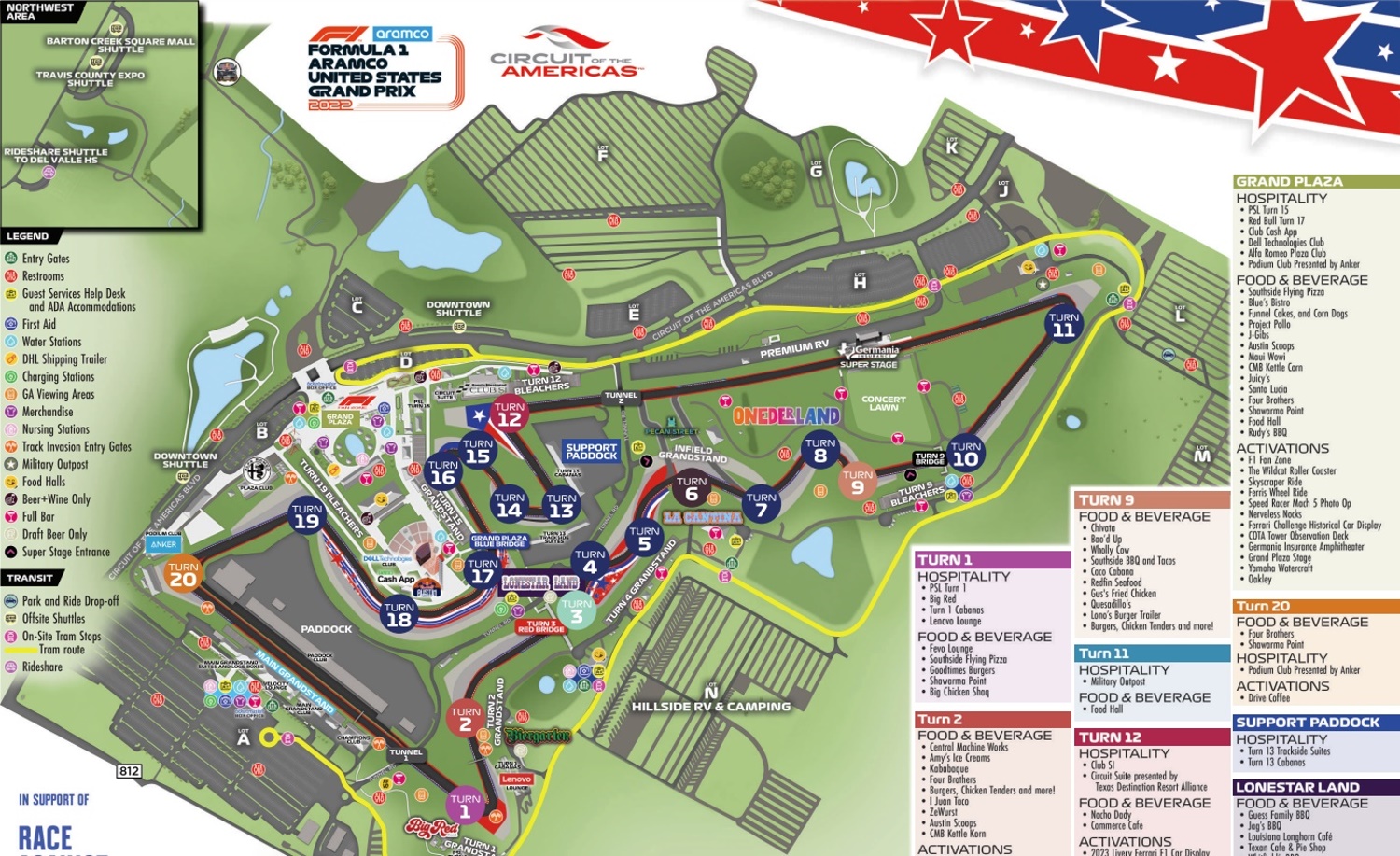
Unlocking the Lap
Overtaking: COTA tends to feature a good number of overtakes – with 40 on average being made outside of the first lap and restarts. Some 72 per cent of passes are made using DRS – with the two zones being situated on the runs to Turns One and 12, the latter being the preferred spot for moves.
Safety Cars: The Safety Car has not been used here since 2015 and has only made an appearance four times in total. Virtual Safety Cars are a bit more common, with five uses since its inception. The VSC rate is above average and is also in part due to a retirement rate above the norm.
Strategy: The middle selection of tire compounds – the C2, C3 and C4, will be used for the first of three consecutive race weekends. This is not usually a one-stop race. Ease of overtaking, a short pit-lane delta and high tire degradation are factors that all come into play.
A lap begins with a climb of 90 feet as the cars approach one of the most iconic hairpins on the whole calendar – Turn One. Uphill braking shortens the slow-down distance for the corner, but a very wide entry massively aids wheel-to-wheel battling. The apex is tough to spot, and the exit is tight and tricky as the cars head back downhill.
This immediately feeds into the fast, sweeping sector that takes inspiration from Silverstone’s Maggotts and Becketts sequence. This is a series of seven bends in quick succession, each with their own challenges on the tires and the car. Each is important to lap-time, with the final twist of the sequence deceptively tight.
At the end of the long back straight is Turn 12, another challenging hairpin. This is where most of the passing will happen, aided by a long DRS zone. Judging the braking point for this corner is tricky, and running wide is easy to do. Doing so then compromises the tricky sequence of corners that follow.

Kevin Magnussen on the infamous Turn 1
They say everything is bigger in Texas and Turn 1 certainly lives up to that statement. With a steep uphill approach, how do you master that on lap 1 and manage to overtake during the race without losing the place back through Turn 3 – 6?
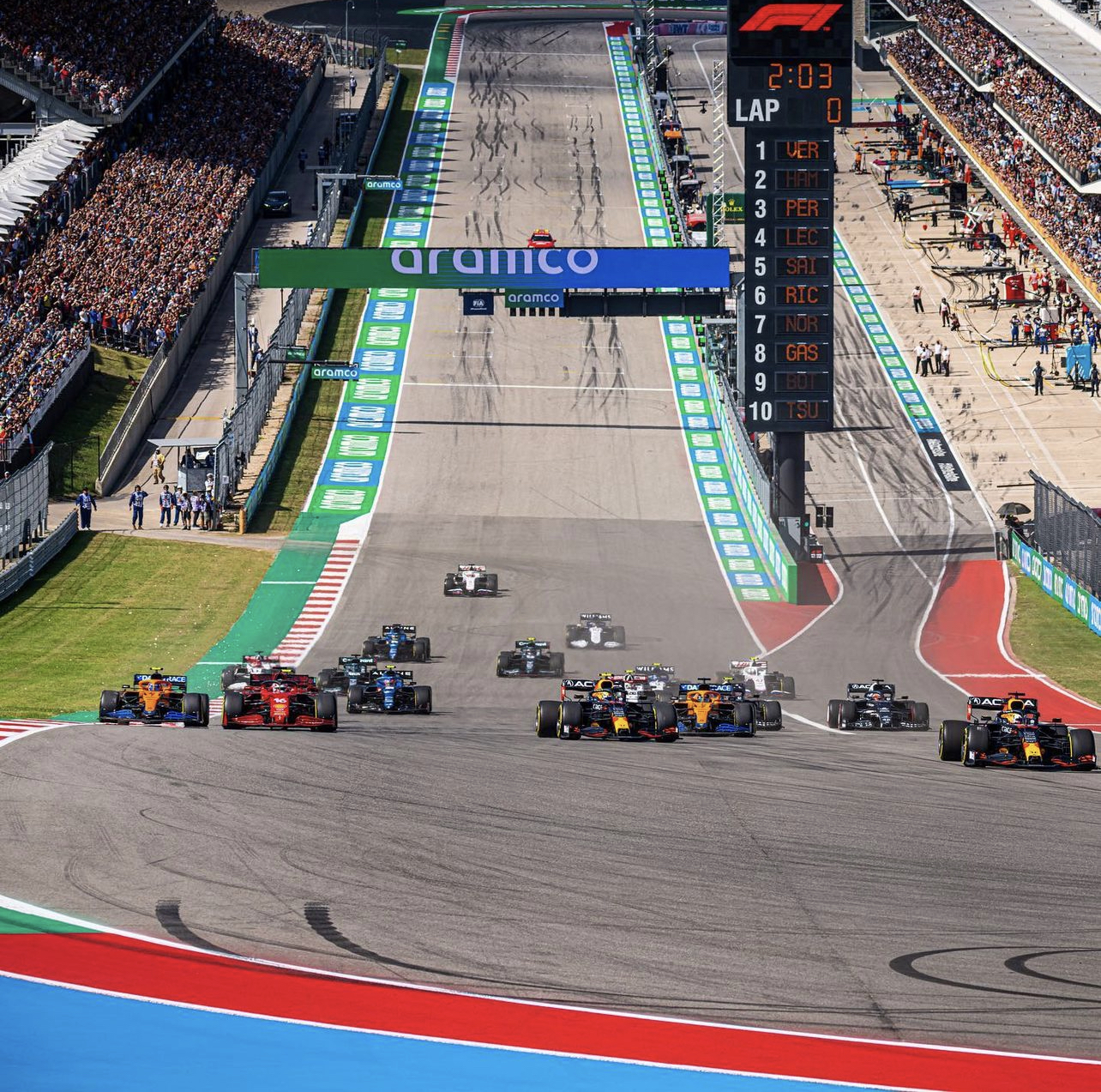
“It’s a pretty unique corner. It becomes very wide towards the apex, you can’t actually see the track as it’s over a crest, and it’s super wide. The apex itself is very narrow so it creates opportunities for a lot of different lines. Overtaking there is a big opportunity with it being straight after a DRS zone as well. There aren’t many corners that have that sort of width to it. It’s kind of easy to lock-up towards the apex because you go over that crest but as you hit the brakes, you’re on that hill so you can brake very hard because of that. After Turn 1, you go downhill again into those ‘esses’ and that’s where following becomes a bit tricky so if you’ve got the position, it’s pretty easy to keep it afterwards because of the high-speed corners.”
Last Year’s USGP – Verstappen defeats Hamilton
Scorching temperatures, sunny skies and packed grandstands at COTA created a spectacular atmosphere for an equally exciting 56-lap USGP Formula 1 race
Lewis Hamilton got the jump on polesitter Max Verstappen at the start, but Red Bull used the undercut to get Verstappen out in front of Hamilton after both pitstops and although Hamilton had the faster tires than Verstappen over the last 20 laps, he was not able to catch the Dutchman and finished 1.33s behind at the flag.
Hamilton couldn’t have done much more there – he closed the gap when he needed to, but found it too hard to follow closely in the dirty air on those last few laps.
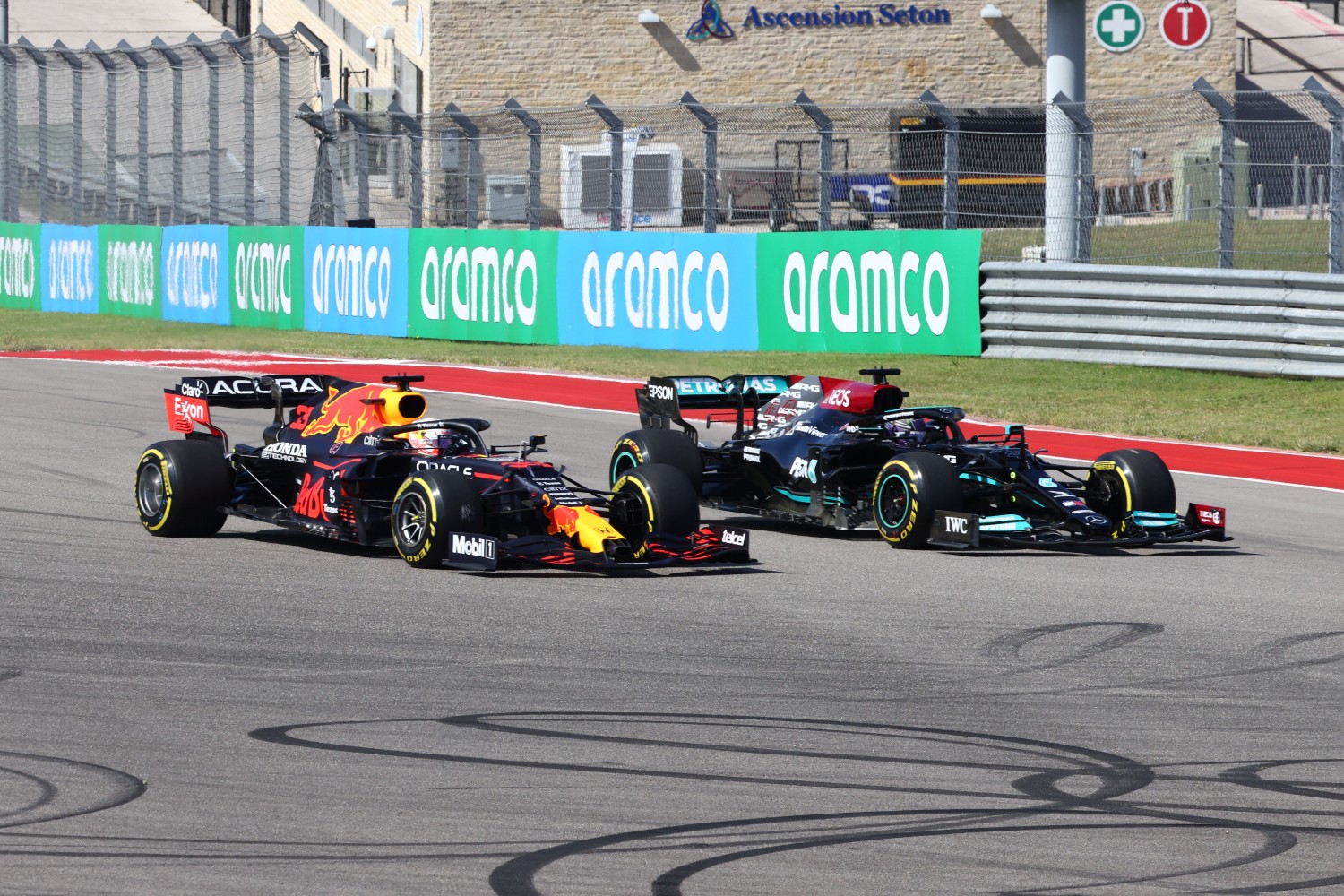
The win did not look likely with ten laps to go. But the Dutchman managed his tires to perfection.
With the win, Verstappen doubled his championship points leads to 12 with 5 races remaining in the season.
Mercedes to unleash another batch of upgrades
Mercedes will bring another batch of upgrades to the United States Grand Prix – their last in terms of aerodynamic changes this season, the team’s Trackside Engineering Director, Andrew Shovlin, has revealed.
Speaking in Mercedes’s Japanese Grand Prix debrief video, Shovlin ran through how the car will evolve again at the Circuit of The Americas (COTA) in a move that the team hope will not only lead to an uptick in performance over the remaining four races, but also filter through to 2023.
“It’s our final step of aero development and that will hopefully give us a bit more performance, but importantly, with every step we are learning more and more, and that learning we can carry into next year – so that’s part of it,” he said.
“Also, there [are] a few bits where we have taken some weight out of components that will hopefully get the car closer to the weight limit [the minimum permitted being 798kg].”
Despite optimism over the developments, Shovlin added that it is “very difficult” to make any predictions about Mercedes’ raw speed relative to Red Bull and Ferrari in Austin, where Max Verstappen edged out Lewis Hamilton for victory 12 months ago.
Can Red Bull Secure the coveted Constructor’s Title
Red Bull can seal their first constructors’ title since 2013 at the United States GP.
Even if Red Bull end up tied on points with Ferrari, Red Bull are guaranteed to have won more races and would therefore take the title on a tie-breaker. So, even if Ferrari score a one-two finish and set the fastest lap (to score the maximum 44 points), third and fourth would be enough for Red Bull to be champions.
Of course, if Red Bull win the race, the title is theirs, as those 25 points will mean Ferrari won’t be able to outscore them by the required amount.
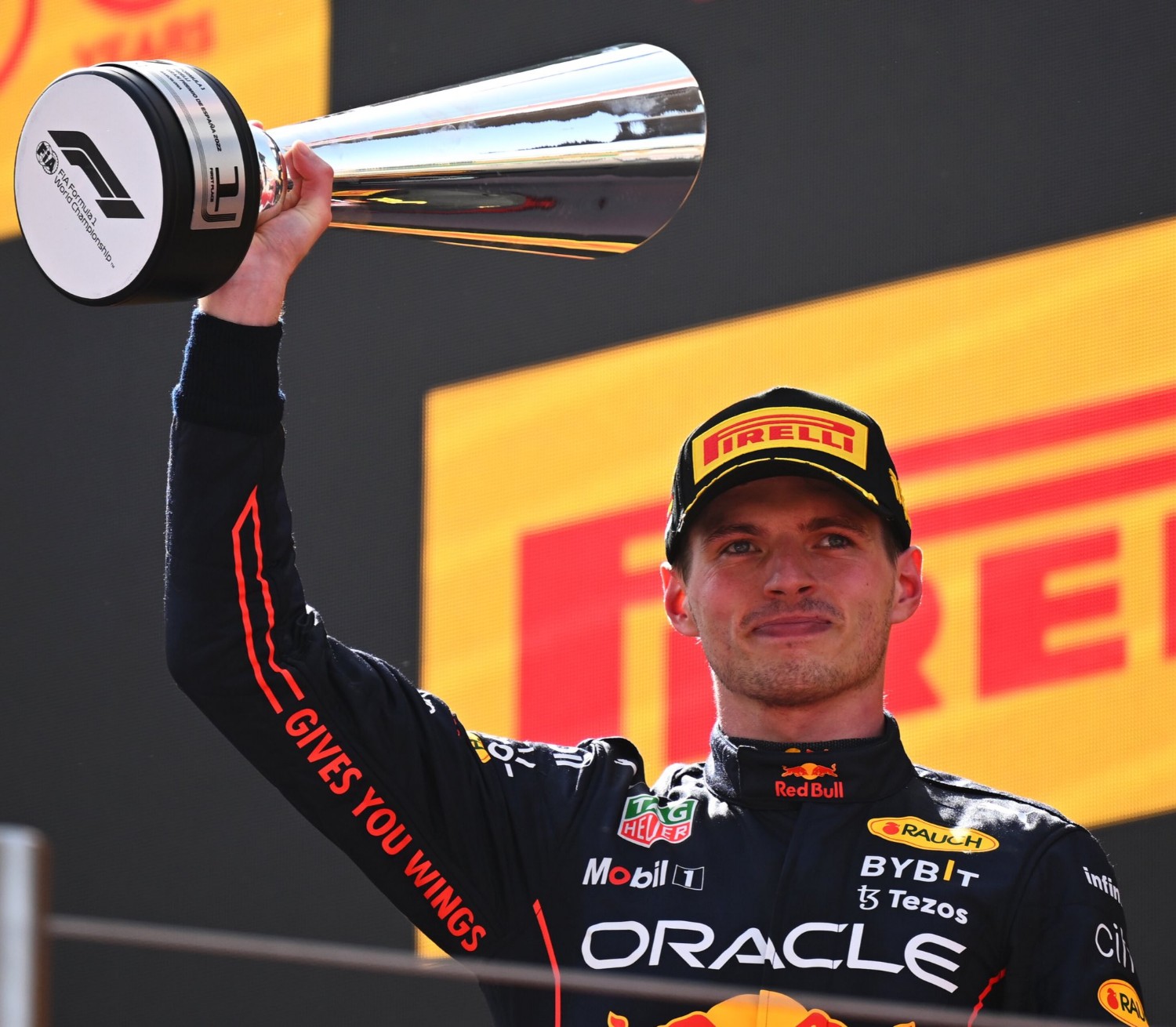
Max Verstappen might have wrapped up his second drivers’ championship, but that doesn’t mean there isn’t still plenty to play for.
With four rounds of the season left, the battle for second place in the drivers’ standings is an extremely tight one. Sergio Perez moved back ahead of Charles Leclerc courtesy of his second place at Suzuka, but there is just one point between them as they battle for vice-champion honors.
American in First Practice
Not since Alexander Rossi for Marussia in 2015 has an American driver taken part in a Formula 1 session during a Grand Prix weekend, let alone in the States, but Logan Sargeant is about to buck that trend.
The 21-year-old – who is currently third in the standings in the Formula 2 championship – will make his FP1 debut for Williams as he completes one of the teams’ mandatory rookie outings in Austin.
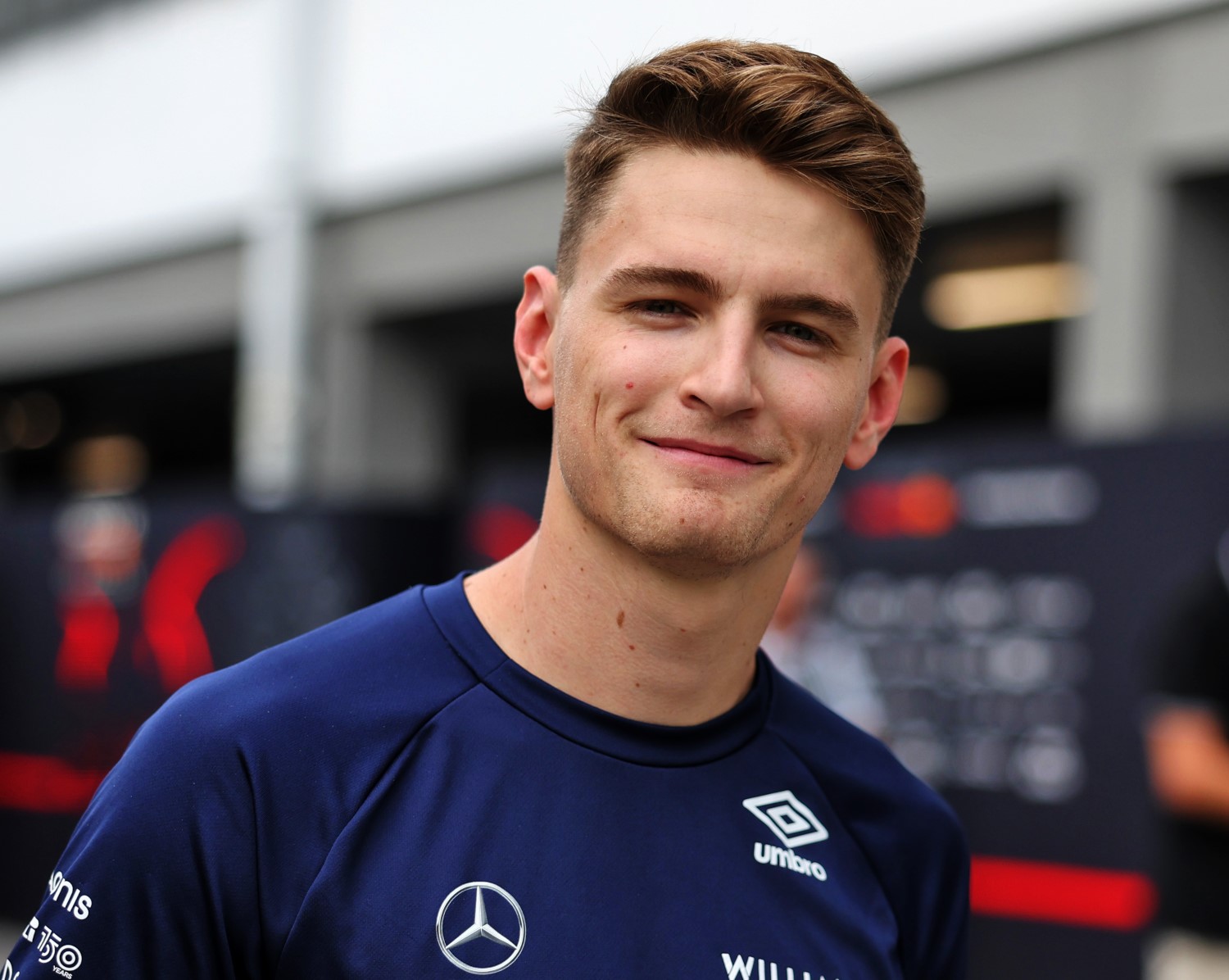
Singapore Grand Prix, Thursday 29th September 2022. Marina Bay Street Circuit, Singapore.
Sargeant has been extremely impressive during his rookie campaign in F2 so far, winning two feature races for Carlin and putting himself in a prime position to secure the required Super License points that would make him a candidate for a race seat in future. And with a vacancy at Williams next year it’s not beyond the realms of possibility that Sargeant could find himself on the F1 grid full-time, and the FP1 appearance will be his first major audition in 2022 machinery.
“To be making my FP1 debut at COTA in my home country is special moment for me. I’d like to thank Williams and Dorilton Motor Sports for this opportunity and the support they’ve given me since I joined the Academy this time last year in Austin. I’ve been spending a lot of time in the simulator at Grove and shadowing the team at previous race weekends to help with my preparations for FP1. It’ll be interesting to see how the new generation of cars compare to the what I previously drove at the Young Driver Test last year. I’m excited to jump in the car and make the most of the session.”
Soon to be ex-IndyCar driver in First Practice
IndyCar racer Alex Palou will also be in action in front of a familiar crowd as he fulfills FP1 duties for McLaren at COTA.
Palou, the 2021 IndyCar champion, aspires to be a full-time F1 driver and this is his first chance to show what he can do.
His goal is to leave IndyCar after the 2023 season and focus on F1.
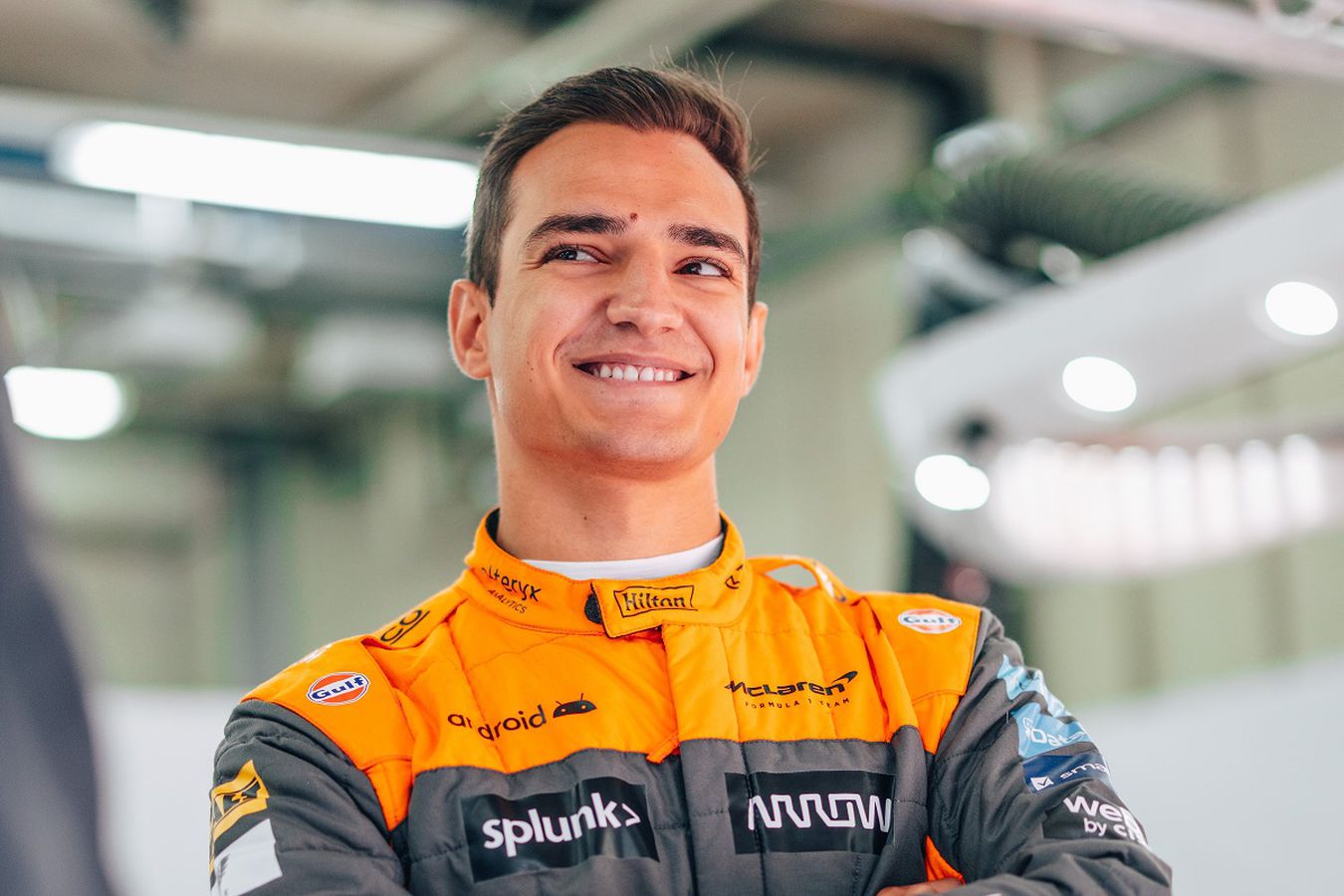
TV Times
All Times Eastern
| Friday, October 21, 2022 | Location | TV Times | Network |
| F1 US Grand Prix Welcome to the Weekend | COTA, Austin | 2:00pm – 2:55pm (Live) | ESPN3 |
| F1 US Grand Prix Practice 1 | COTA, Austin | 2:55pm – 4:00pm (Live) | ESPN2 |
| F1 US Grand Prix Practice 2 | COTA, Austin | 5:55pm – 7:30pm (Live) | ESPN News |
| Saturday, October 22, 2022 | Location | TV Times | Network |
| The Shift – New Technology for Formula 1 | N/A | 2:30pm – 3:00pm (Taped) | CNBC |
| F1 US Grand Prix Practice 3 | COTA, Austin | 2:55pm – 4:00pm (Live) | ESPN News |
| F1 US Grand Prix Qualifying | COTA, Austin | 5:55pm – 7:00pm (Live) | ESPN News |
| F1 US Grand Prix – Ted’s Qualifying Notebook | COTA, Austin | 7:45pm – 8:00pm (Live) | ESPN3 |
| Sunday, October 23, 2022 | Location | TV Times | Network |
| F1 US Grand Prix – Pre-Race | COTA, Austin | 1:30pm – 3:00pm (Live) | ABC |
| F1 US Grand Prix – Race | COTA, Austin | 3:00pm – 5:00pm (Live) | ABC |
| F1 US Grand Prix – Post-Race | COTA, Austin | 5:00pm – 6:00pm (Live) | ESPN3 |
| F1 US Grand Prix – Ted’s Race Notebook | COTA, Austin | 6:00pm – 6:30pm (Live) | ESPN3 |
| F1 US Grand Prix – Race | COTA, Austin | 6:30pm – 9:00pm (Replay) | ESPN News |
Pirelli Tires
The middle three compounds have been nominated for Austin: C2 as the P Zero White hard, C3 as the P Zero Yellow medium, and C4 as the P Zero Red soft.
The uneven track surface could make it necessary to run a higher ride height, influencing aerodynamic performance. The teams will need to study the data carefully to find the best set up.
The United States Grand Prix was a two-stopper last year, but with a completely new range of tires, it might be a different story this time round – thanks to new regulations, different weather conditions and other variables on track.
As was the case in Japan, but was rained out, the second free practice session has been extended to 90 minutes to test the 2023 slick tire prototypes, helping to fine-tune the compounds for next year before the teams get to try the definitive versions after the Abu Dhabi Grand Prix. The entire FP2 session will be devoted to the tire test, with Pirelli setting the run plan. If a team uses a young driver for FP1, it is allowed to run its own program for some of FP2, before concentrating on the tire test for the remainder of the session. The prototype tires can easily be recognized as they won’t carry colored markings on the sidewalls.
MARIO ISOLA – MOTORSPORT DIRECTOR
“We’ll be testing some 2023 prototype slick tires at the Circuit of the Americas”
“The Circuit of The Americas is a balanced layout when it comes to the demands placed on cars and tires in terms of traction, braking and lateral loads, but it’s mainly a flowing track that the drivers love, which nonetheless presents some challenging sections that shouldn’t be underestimated. The track was partially re-asphalted in 2020, with a ‘milling’ process also taking place last year to shave off the worst of the bumps that oblige teams to raise the ride height, which affects aerodynamics. In the first free practice session, there could be a high degree of track evolution so it’s going to be vital for the teams to maximize the data collected during FP3 to define the best strategy. The second free practice session will be dedicated to slick tire testing for 2023, weather permitting. Weather conditions in Austin have been extremely variable in the past, so it’s a circuit where you have to be ready for anything!”

